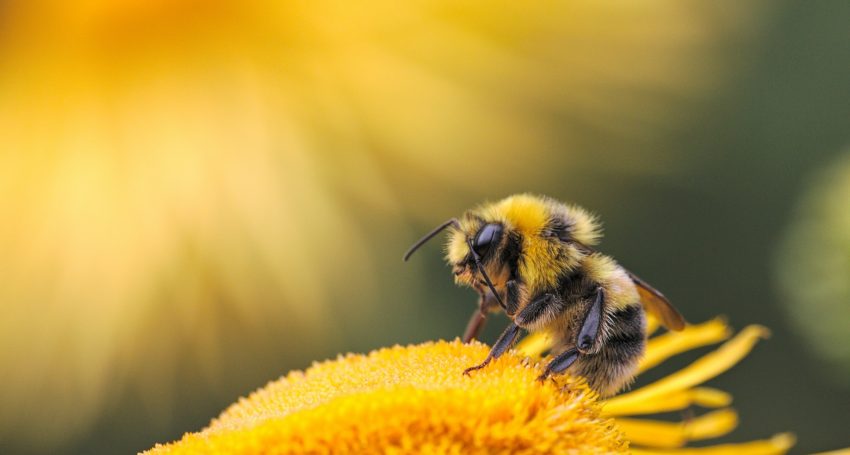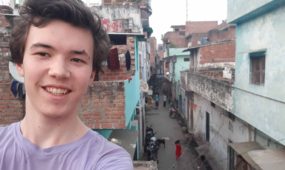World Environment Day
Features
Justice Unit Coordinator Jen Basham shares about World Environment Day, which is approaching on Thursday 5 June

Coming up on 5 June is World Environment Day. The message for this United Nations backed day is emphatic:
“The foods we eat, the air we breathe, the water we drink and the climate that makes our planet habitable all come from nature.
Yet, these are exceptional times in which nature is sending us a message:
To care for ourselves we must care for nature.
It’s time to wake up. To take notice. To raise our voices.
It’s time to build back better for People and Planet.
This World Environment Day, it’s Time for Nature.”
This call is striking for a United Nations backed campaign website. Yet we know it is timely, accurate and just. Still battling record-breaking droughts, having just come through a horrific summer of extreme bushfires, and now collectively navigating our way through health challenges unprecedented in modern times, it is easy to look around and see the evidence of great disturbance between the relationship of humans and creation.
At the heart of observance of World Environment Day for 2020, is the theme of biodiversity. ‘Biodiversity’ is the name for the complex variety of life on Earth, all the animals and plants, and the ecosystems in which we are all intertwined. It describes the interdependences of all this life, each playing different and unique roles, in often ‘unseen’ ways, yet all dependent on the other.
Our lack of attentiveness, and the gradual or hidden ways in which our biodiversity is impacted by human activity, makes it all the more concerning.
For instance, we now understand how widespread pesticide use is leading to significant declines in insect populations. As much as I dislike being the person at the picnic that always gets bitten, as the National Geographic put it: “without bugs we might all be dead.” For bugs are the workhorses of our ecosystems, burying through our waste to return nutrients to the Earth, and providing a source of food for all manner of birds, marsupials and other creatures along the food chain. Lose them and whole ecosystems risk collapse.
Advertisement
The story of bees, in particular, also highlights the interdependencies we have and the importance of biodiversity. Internationally they are being hugely impacted by our chemical use, and now locally, too, by recent droughts and bushfires; both directly in the loss of hives, and indirectly in the loss of bushlands and water they need for sustenance.
Their habitats are also reduced from our deforestation and changes to the landscape, like bulldozing scrub for agriculture or mining. Or concreting our cities and caring more about the appearance or maintenance of what we plant, than where a plant naturally belongs or how it functions. Less diversity in flowers means bees are undernourished, weakened, and more susceptible to a range of parasites and pathogens. And, as we burn fossil fuels and create more pollution, further changing the climate, not only do we intensify the bushfires and droughts, but we upset other delicate balances, such as the range and habitats of bees, and the proliferation of deadly parasites. So, on and on flows the cascading impacts of short-sighted human activity, that cares only for the here, the now and the money.
Yet we rely on both wild and cultivated bees for pollination in about two-thirds of Australian agriculture. Our very food security depends on the health of our bees.
There are Public Health experts who state that the “COVID-19 crisis and the climate and biodiversity crises are deeply connected”, and further that “our seeming unwillingness to respect the interdependence between ourselves, other animal species and the natural world more generally” is leading to threats like COVID-19.
Advertisement
Practically we are seeing the impact in that three out of every four new infectious diseases comes from livestock and wildlife.
Like the example of bees, our human activity is affecting the natural world at every level. Take bats as another example. One way that such ‘zoonotic diseases’ can jump to humans is when humans eat them. So most directly, a person could catch a disease by eating bat. Research recently published in Science Daily tells us that bats are also likely to shed more viral load when they are under stress.
So if people are shooting at bats, cutting down trees they nest in, trying to eradicate them or get them off their property; then you don’t just move the bat on, you push it out of its territory into new spaces where it sheds an increasingly dangerous virus, such as through its faeces, and it can infect new animals. It was such a transmission, from a bat to a horse and then humans, that caused the outbreak of the acute respiratory disease Hendra virus in Brisbane in 1994.
In addition to this, at a larger scale, as global heating increases and weather and rain patterns change, such animals are experiencing ever more disruption, as their water, food sources (e.g. fruit, smaller creatures), and habitat degenerate or are lost.
So it is human disdain for the natural world, as something merely to be exploited, that creates vicious local and global feedback loops, in turn further destabilising our environment. And, consequently, real threats to our own wellbeing, from food security to disease. Other diseases that have jumped from animals to humans include Ebola, SARS, and bird flu.
This is why public health officials now implore us to take a holistic view of public health that includes the natural world, acting with “planetary consciousness”.
This is yet another way of human beings reminding ourselves that we must understand ourselves as part of the delicate web of life becoming life, that God called forward. To know our place, to love and revere all of God’s creation.
This is not just the job of priests or politicians. It must be the essential commitment of you and me, and all of us, in all that we do.
Related Story
 Features
Features
Slumdog takes on millionaire
Indeed, as Anglicans we have enshrined this commitment and call within our Marks of Mission. Alongside “proclaiming the Good News of the Kingdom” and responding to “human need by loving service”, we are called to “strive to safeguard the integrity of creation, and sustain and renew the life of the earth”.
And so, as we get closer to World Environment Day, in the strange environment of COVID-19, I want to take some time to examine how we got to here. Have we neglected our relationship to God, to all our neighbours to all of Creation?
For the story of bees is not just about protecting them to save ourselves. Life is too complex. It highlights how a right relationship with all creation, is needed to create balance and flourishing for all, including ourselves.
Perhaps the more challenging question is how to respond, now.
What would it look like to really enact a love and reverence for all creation in our own lives? How do we wake up, and step up to that?
Explore resources and news from:





